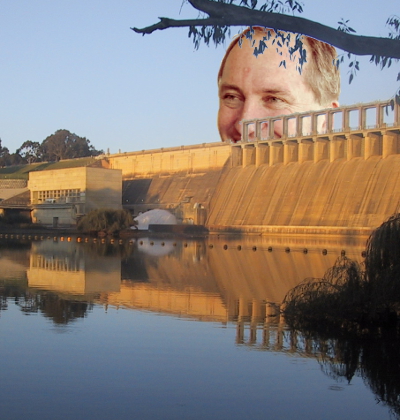Big dam plan to set new regional path
 The Federal Government finally released its long-awaited Agricultural Competitiveness White Paper over the weekend, which includes hundreds of millions of dollar set aside for new dams, roads and other infrastructure.
The Federal Government finally released its long-awaited Agricultural Competitiveness White Paper over the weekend, which includes hundreds of millions of dollar set aside for new dams, roads and other infrastructure.
In a move the Government says will be a big boost for jobs and the future viability of regional areas, the new $500 million National Water Infrastructure Development Fund has been launched.
Minister for Agriculture, Barnaby Joyce, said $50 million would be allocated to support the planning necessary to decide on viable projects for investment, while $450 million will be spent on water infrastructure in partnership with states and territories.
“Water is the most basic input for life—this funding will help supply water for communities, agriculture and industry,” Minister Joyce said.
“It's a critically important resource for our farmers... a lot of work has been done to identify dams and water infrastructure projects that will benefit rural and regional communities and agriculture.
“There is a long and growing list of suggested sites and projects that could benefit from funding right across the country from managed aquifer recharge in the Northern Territory to Gippsland's Macalister Irrigation District Southern Pipeline in Victoria.
“There are many great opportunities in the Nathan and Emu Swamp dams, Rookwood and Eden Bann weirs in Queensland, Dungowan Dam in New South Wales and the Ord Stage 3 in Western Australia and the Northern Territory.”
But of the $500 million seemingly set aside, the Government says $200 million was already provided through the recent white paper on developing Northern Australia.
The National Farmers' Federation (NFF) has rated the Agricultural Competitiveness White Paper “seven or eight out of 10”.
“It’s very important, given the Australian economy is flattening, that we were able to receive from the federal cabinet a fairly substantive package delivered to Australian agriculture,” said NFF chief Simon Talbot.
But he said the paper had one glaring omission; there is no commitment to build inland rail to improve farmer’s competitiveness.
“With that in play it would have been a rating of nine out of 10 or a 10 out of 10,” he said.
“If more for infrastructure, particularly the inland rail, was delivered today it would have been a better and more robust set of results.
“For seven years now we’ve been talking about feasibility and scoping studies for the inland rail project but in reality the North and South Americans are light years ahead of us in terms of rail efficiencies.
“We should stop talking about it and just build it in the next three to five years.”
Shadow Agriculture Minister Joel Fitzgibbon said the long wait for the document had been in vain.
“There is no big picture, no vision and no strategic plan, no objectives, no goals,” he said.
“After an almost two-year wait, expectations of a document of quality were raised but the mood will be somewhat sombre today.
“White papers are about identifying strengths, weaknesses and opportunities for the development of a high-level strategy for overcoming the weaknesses and making the most of opportunities.”
Greens' agriculture spokesperson Senator Rachel Siewert said the lack of any climate change considerations in the White Paper left the document “fundamentally flawed”.
“They haven’t considered the impact of climate change on water supply and dams,” she said.
“Of course we need to be better prepared for drought, but drought isn't the only thing that we address in climate change.
“ Extreme weather events need to be factored in properly, planning for what our agriculture will look like in a drying climate and in a changing climate, but that's not there.
"[As for] the significant investment that's needed in R&D, while [the White Paper] put a little bit more in, it's not enough to address how our agriculture is going to change under climate change.
“Climate change will shape the future of agriculture and it is fundamentally missing in here. The fact that it's not acknowledged says a lot about where this government's head is at.”







 Print
Print